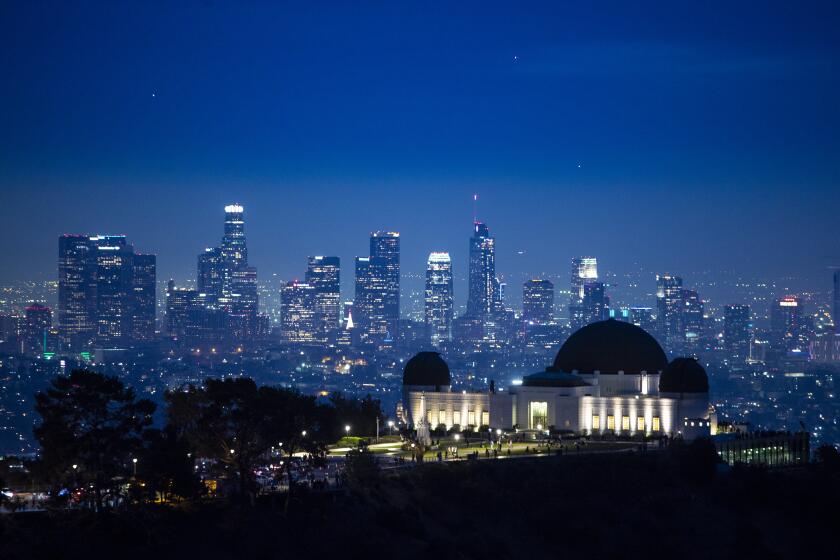Koreatown, Western Ave
Koreatown can feel like a visual din of symbols. Signs outside tea houses, restaurants and beauty shops are mostly in Korean, mystifying English- and Spanish-speaking commuters idling on car-clogged Western Avenue.
- Share via
Flash 9 player required
Behind high, bland walls at a Koreatown temple, the Yun girls are princesses for the day.
In honor of the Lunar New Year, Grace, 2, and Cindy, 3, wear new hanboks so richly petal-pink that they would be the envy of young Sleeping Beauties and Cinderellas anywhere. Their shoes left at the temple door, they wait to bow to elders and receive "lucky money" in return.
The 3,000-member Korea Sah Buddhist Temple, once a social hall for Czech Americans, is now watched over by hand-carved and painted Buddhas and bodhisattvas. Such transformations are common in this dense, lively neighborhood west of downtown Los Angeles that is home to a quarter-million people, many of them immigrants from Asia, Mexico and Central America.
Koreatown can feel like a visual din of symbols. Signs outside tea houses, restaurants and beauty shops are mostly in Korean, mystifying English- and Spanish-speaking commuters idling on car-clogged Western Avenue. But more multilingual signs are turning up as business leaders lobby to make Koreatown as welcoming to visitors as Chinatown and Little Tokyo.
At the Galleria Food Court, bilingual menus tout barbecued chicken and steaming fish soups. Posh condominium towers at Wilshire Boulevard draw well-heeled young residents. And at the nearby Le Cercle Super Club, an ever-more-diverse crowd of almost-grown-up princesses and princes dances the night away.
View All Street Scenes
Sign up for Essential California
The most important California stories and recommendations in your inbox every morning.
You may occasionally receive promotional content from the Los Angeles Times.







